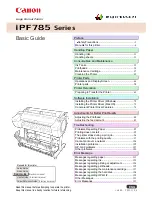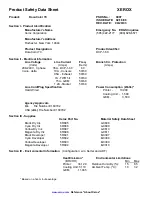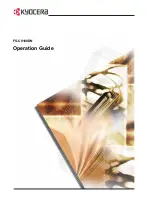
3
Paper Handling
Xerox PE220
3-3
Guidelines for Paper and Special Materials
When selecting or loading paper, envelopes, or other special material, keep
these guidelines in mind:
•
Always use paper and other materials that conform with the specifications
listed under
Paper Specifications on page 10-6
.
•
Attempting to print on damp, curled, wrinkled, or torn paper can cause
paper jams and poor print quality.
•
Use only high quality copier grade paper for the best print quality.
•
Avoid paper with embossed lettering, perforations, or a texture that is too
smooth or too rough. Paper jams may occur.
•
Store paper in its wrapper until you are ready to use it. Place cartons on
pallets or shelves, not on the floor. Do not place heavy objects on top of
the paper, whether it is packaged or unpackaged. Keep it away from
moisture, or other conditions that can cause it to wrinkle or curl.
•
Store unused materials at temperatures between 15
o
C and 30
o
C (59
o
F
to 86
o
F). The relative humidity should be between 10 % and 70 %.
•
During storage, you should use a moisture-proof wrap, such as a plastic
container or bag, to prevent dust and moisture from contaminating your
paper.
•
Load special paper types one sheet at a time through the manual tray or
the paper tray to avoid paper jams.
•
Only use materials specifically recommended for use in laser printers.
•
To prevent special materials, such as transparencies and label sheets
from sticking together, remove them as they print out.
•
For envelopes:
– Use only well-constructed envelopes with sharp and well creased folds.
– Do not use envelopes with clasps and snaps.
– Do not use envelopes with windows, coated lining, self-adhesive seals,
or other synthetic materials.
– Do not use damaged or poorly made envelopes.
– Only use envelopes recommended for laser printers.
– Do not feed stamped envelopes.
•
For transparencies:
– Place them on a flat surface after removing them from the machine.
– Do not leave a transparency in the tray for long periods of time. Dust and
dirt may accumulate, resulting in spotty printing.
– To avoid smudging caused by fingerprints, handle them carefully.
– To avoid fading, do not expose printed transparencies to prolonged
sunlight.
– Only use transparencies recommended for use in laser printers.
– Ensure that transparencies are not wrinkled, curled, or have any torn
edges.
















































